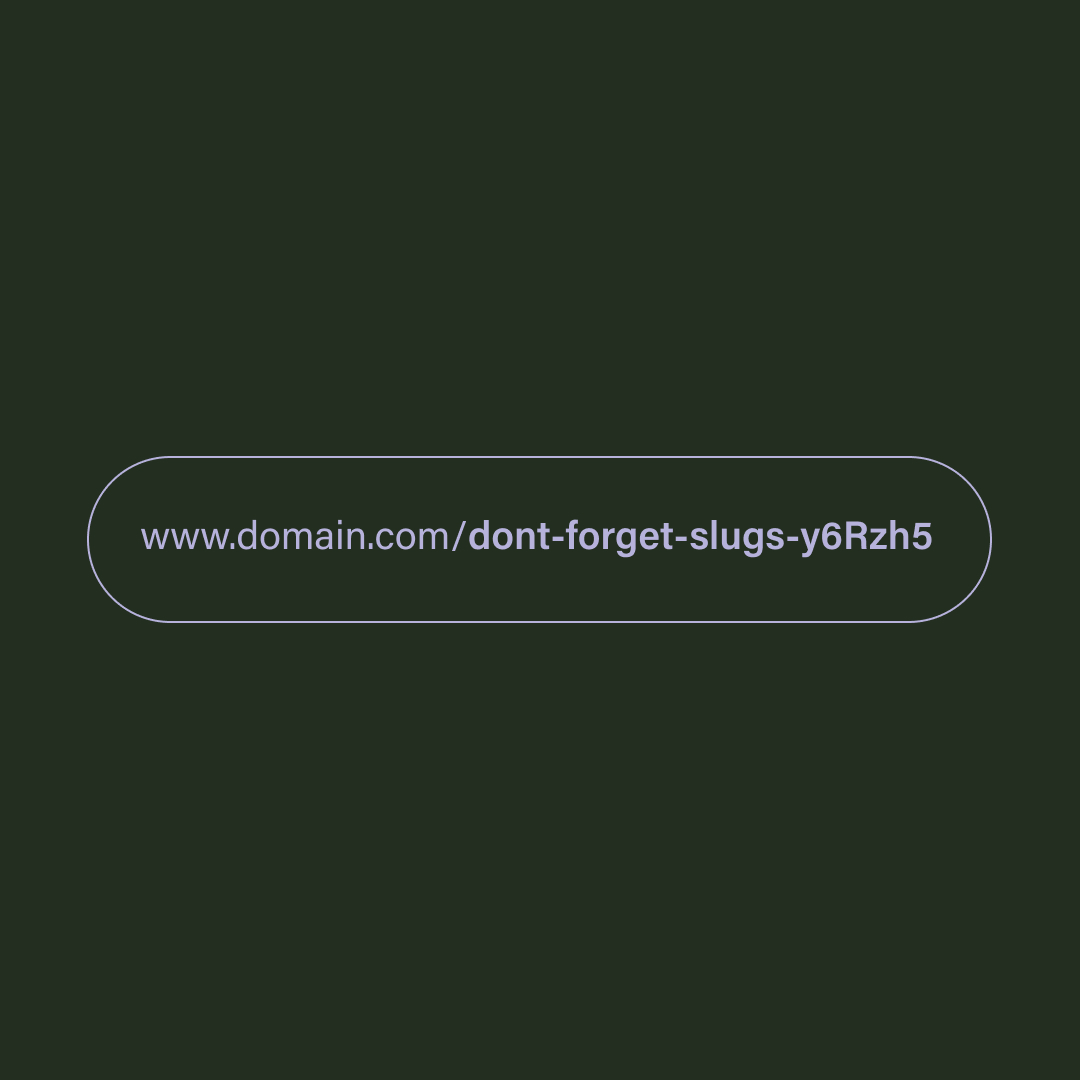Don't forget to check your address

- Remove the current class from the content27_link item as Webflows native current state will automatically be applied.
- To add interactions which automatically expand and collapse sections in the table of contents select the content27_h-trigger element, add an element trigger and select Mouse click (tap)
- For the 1st click select the custom animation Content 28 table of contents [Expand] and for the 2nd click select the custom animation Content 28 table of contents [Collapse].
- In the Trigger Settings, deselect all checkboxes other than Desktop and above. This disables the interaction on tablet and below to prevent bugs when scrolling.
We’re talking Slugs. URL slugs to be precise.
Your URL Slug is the text that appears after the / in your URL, or web address. For example, on Instagram, your handle is your slug. A slug is an important part of a website, providing a URL that is easy to remember and share, as well as conveying a sense of what the page is about.
So often overlooked, slugs can have a pretty big impact on your search ranking. Even if SEO isn’t a primary concern for your website, optimized slugs can make your website easier to use.
It is important to make sure the slugs in your web address are descriptive and accurate. That way, your website is easier to use and search engines can index your website more effectively. To avoid duplication, you should check your slugs periodically to make sure they are current and up-to-date. Additionally, if you make changes to your page, make sure the slug accurately reflects the page’s content.
URL slugs are auto-generated on many, if not all, website builders. Sometimes these auto-generated slugs are good enough, but not always.
What makes a “good slug?”
A “good slug” is easy to remember and share while conveying a sense of what the page is about. Here are some guidelines to follow when writing your url slugs:
- Drop articles, prepositions, or connective words like “the” or “of” or “and”
- Aim for 5 words or less
- Separate words with “-” e.g. /your-page-name instead of /yourpagename
- This is a good spot to use page specific keywords, but only if they’re relevant
- You don’t need to capitalize words in your url
Common auto-generated slug errors
Page duplication
When you duplicate a page, you may wind up with a slug referencing the original page you duplicated, even after you update its copy.
For example, if you build out your home page and then duplicate it to build out your about page, you may have a home page with the slug /home and an about page with the slug /home-1.
Blog posts
Blog posts will often use the title as the slug. You may need to go through and get rid of unnecessary words and/or find other ways to shorten the slug while keeping it relevant.
For example, I wrote a post called “5 Don't-Skip Steps when Uploading Images to your Website.”
The auto-generated slug was /5-dont-skip-steps-when-uploading-images-to-your-website.
This is relevant, but too long. So I changed it to /five-steps-uploading-new-images.
(To be clear, there is no punctuation in these slugs, just in case you were wondering.)
This still tells a visitor (or a robot) what they can expect to find on this page, but is much easier to remember and type.
Site Updates
Often when content is updated seasonally or swapped out, the slug isn’t updated to match, which can lead to confusion. Make sure that any website or content updates you make include updating your slug to match.
When updating your slugs, don’t forget to redirect.
What is a 301 redirect? A 301 redirect is a way of telling search engines that a web page has permanently moved to a new URL. Keeping track of the one you're changing is an important step in setting up a URL 301 redirect. You'll need to write the redirect as such: /old-url-slug -> /new-url-slug 301.
How to set up a URL 301 redirect
These are typically set on your DNS records. However, the major web platforms all have ways to set these without touching your DNS records. The process can vary depending on the website builder you use.
- Setting up URL redirects on Squarespace
- Setting up URL redirects on Webflow
- Setting up URL redirects on Wix
- Setting up URL redirects on Wordpress
Be sure to double-check your URL 301 redirects before implementing them.
Another important consideration when updating your URLs is to go through your site and update any links to that page. With a URL redirect, your visitor will still reach your new page, but keeping your links accurate will help that page load faster.
In summary
Slugs are an important part of a website, providing an easy-to-remember URL that accurately reflects the page's content. To ensure a good search ranking and user experience, slugs should be descriptive and up-to-date, and should be checked periodically for duplication and accuracy.
It’s important to choose slugs carefully and ensure they are descriptive, relevant and unique. When updating, make sure to track your changes and set up URL redirects and update internal site links. This can help to ensure that your website visitors are being directed to the correct pages. This will help keep your website running smoothly and help maintain a positive user experience.